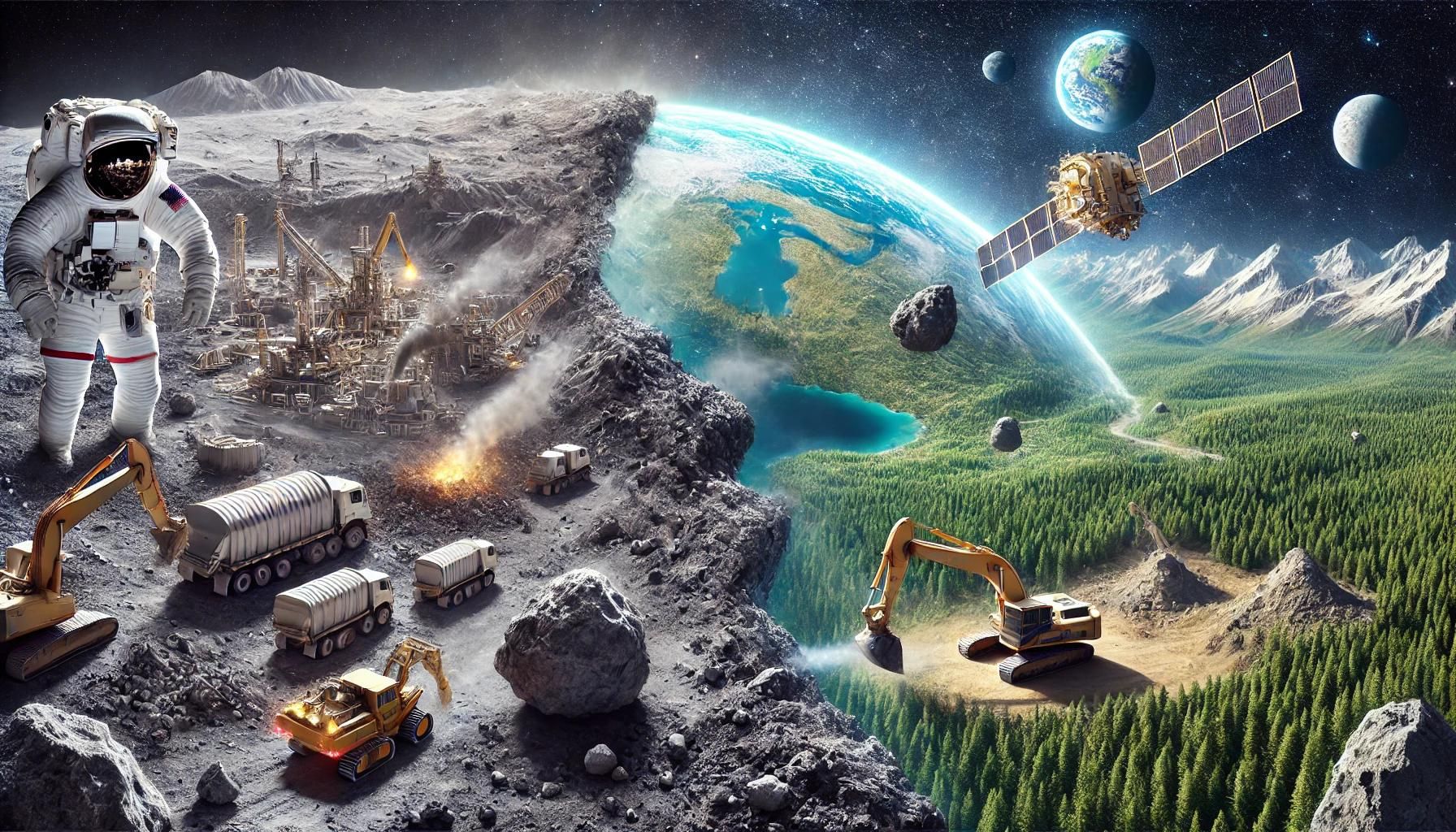
Space mining is no longer just the realm of science fiction. With advancements in technology and increasing interest from both private companies and government agencies, the prospect of mining asteroids and other celestial bodies for valuable resources is becoming a tangible reality. Investing in space mining involves understanding the industry, its potential, the risks involved, and the best ways to invest. This detailed guide will explore how to invest in space mining, covering the market potential, key players, investment strategies, and the future of the industry.
Market Potential of Space Mining
The market potential for space mining is immense. Asteroids and other celestial bodies are believed to contain vast amounts of valuable resources, including precious metals like platinum, gold, and rare earth elements, as well as industrial metals such as nickel and iron. Additionally, water extracted from these bodies can be used to support space missions and be converted into rocket fuel.
- Resource Value: Estimates suggest that the value of resources contained in near-Earth asteroids could run into trillions of dollars. For instance, a single asteroid, 16 Psyche, is thought to contain metals worth an estimated $10,000 quadrillion .
- Economic Impact: The development of space mining could significantly impact the global economy by providing a new source of raw materials, reducing dependency on terrestrial mining, and creating new industries and jobs.
Key Players in Space Mining
Several companies and organizations are leading the charge in space mining. Understanding these key players is crucial for any potential investor.
- Planetary Resources: One of the pioneering companies in the space mining industry, Planetary Resources aims to identify and mine asteroids for valuable resources. They focus on developing technology for asteroid prospecting and extraction .
- Deep Space Industries (DSI): DSI is another major player, focusing on spacecraft technology to explore and extract resources from asteroids. They aim to develop small, low-cost spacecraft for space resource utilization .
- NASA: The U.S. space agency is heavily involved in developing technologies for space exploration and mining. NASA’s Artemis program, which aims to return humans to the Moon, includes plans for extracting resources from the lunar surface .
- European Space Agency (ESA): ESA is also actively involved in space mining research and development, working on projects to identify and utilize space resources .
Investment Strategies in Space Mining
Investing in space mining can be approached through various strategies, depending on the level of risk and involvement desired by the investor.
- Direct Investment in Space Mining Companies: Investing directly in companies that are developing space mining technologies and missions is a straightforward way to gain exposure to the industry.
- Public Companies: Look for publicly traded companies involved in space mining or related technologies. These might include aerospace companies with divisions focused on space exploration and mining.
- Private Companies: Investing in private space mining companies through venture capital funds or private equity can offer high potential returns but comes with higher risks due to the early-stage nature of these businesses.
- Investment in Related Technologies: Companies that develop the technologies needed for space mining, such as robotics, artificial intelligence, and space transportation, also present investment opportunities.
- Robotics and AI: Companies specializing in robotics and AI for space applications are critical to the development of autonomous mining operations.
- Space Transportation: Investing in companies that provide launch services and space transportation infrastructure, such as SpaceX or Blue Origin, can indirectly expose you to the space mining sector.
- Exchange-Traded Funds (ETFs): ETFs that focus on space exploration and technology can provide diversified exposure to the space mining industry.
- SPDR S&P Kensho Final Frontiers ETF (ROKT): This ETF includes companies involved in space exploration and technologies relevant to space mining .
- Procure Space ETF (UFO): Another ETF that offers exposure to companies in the space industry, including those working on space mining technologies .
- Government Bonds and Grants: Some governments may issue bonds or provide grants to support space mining initiatives. Investing in these can be a lower-risk way to participate in the sector.
- Government Bonds: Bonds issued to fund space exploration projects can offer stable returns with lower risk.
- Research Grants: Supporting research and development through grants can be an indirect way to invest in the growth of the space mining industry.
Risks and Considerations
While the potential rewards of investing in space mining are significant, there are also considerable risks and challenges to consider.
- Technological Challenges: The technology required for space mining is still in development. Successful extraction and utilization of space resources depend on overcoming significant technical hurdles.
- Regulatory Uncertainty: The legal and regulatory framework for space mining is still evolving. Issues related to property rights, international agreements, and environmental concerns need to be addressed.
- High Costs: Space missions and mining operations are expensive. The high upfront costs and long timelines for potential returns can be a barrier for investors.
- Market Volatility: The space mining industry is still in its infancy, and market conditions can be highly volatile. Investors should be prepared for potential fluctuations in the value of their investments.
Future Prospects of Space Mining
The future of space mining is promising, with several developments on the horizon that could drive growth in the industry.
- Advancements in Technology: Continued advancements in robotics, AI, and space transportation will make space mining more feasible and cost-effective.
- Increased Government and Private Sector Support: Governments and private companies are increasingly investing in space exploration and mining, providing the necessary funding and support for technological development.
- International Collaboration: Collaborative efforts between countries and space agencies will accelerate the development of space mining capabilities and establish a legal and regulatory framework for the industry.
- Sustainable Development: Space mining has the potential to support sustainable development by providing access to abundant resources, reducing the environmental impact of terrestrial mining, and supporting space exploration missions.
Investing in space mining offers a unique opportunity to participate in the next frontier of resource extraction and technological innovation. While the industry is still in its early stages, the potential rewards are significant, and advancements in technology are bringing the prospect of space mining closer to reality. By understanding the market potential, key players, investment strategies, and risks involved, investors can make informed decisions and position themselves to benefit from the growth of this exciting industry.
References
- “Asteroid Mining Could Be Worth Trillions of Dollars.” Forbes. Forbes.com
- “Planetary Resources: The Asteroid Mining Company.” Planetaryresources.com
- “Deep Space Industries: Pioneering Space Resources.” Dsi.as
- “NASA’s Artemis Program.” NASA.gov
- “ESA’s Space Resources Strategy.” ESA.int
- “SPDR S&P Kensho Final Frontiers ETF (ROKT).” SSGA.com
- “Procure Space ETF (UFO).” ProcureETFs.com
These references provide additional insights and information on the space mining industry and investment opportunities, helping investors make informed decisions about their involvement in this emerging sector.



How can I invest in Tengri?